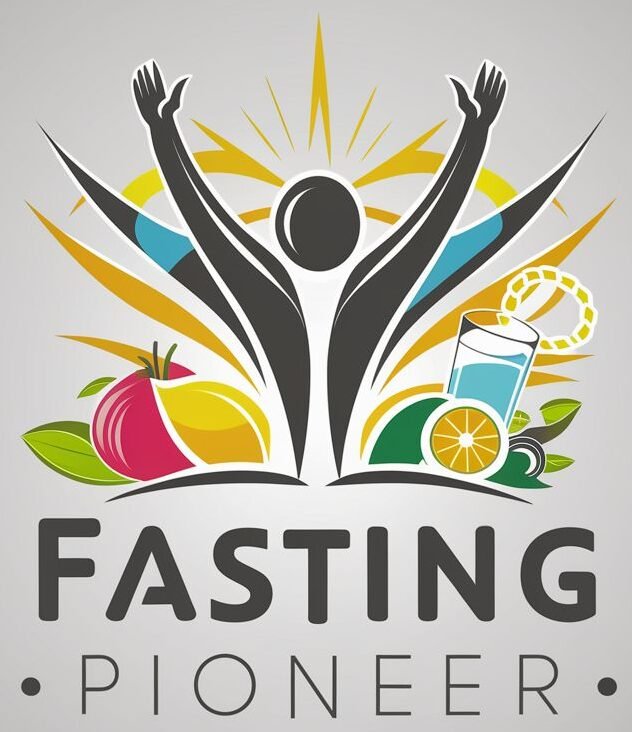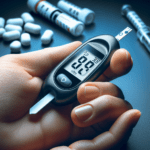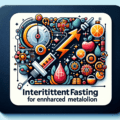Looking to detoxify your body? Fasting might be the answer. In this article, we will explore the benefits and potential risks of fasting for detoxification. Whether you’re a seasoned faster or new to the concept, we’ll provide you with all the essential information you need to know. From the various fasting methods to how it affects your body, we’ll cover it all. So, if you’re curious about whether fasting can help cleanse your system and improve your overall health, keep reading!
Benefits of Fasting
Improves digestion
Fasting has been known to improve digestion by allowing the gut to rest and heal. When you give your digestive system a break from constantly processing food, it can focus on repairing any damage, improving nutrient absorption, and reducing inflammation. This can lead to better digestive health and a decrease in issues like bloating, gas, and indigestion.
Boosts immune system
Fasting can give your immune system a boost by promoting autophagy, a process where the body breaks down and removes damaged cells and toxins. This helps to strengthen the immune system and improve its ability to fight off infections and diseases. Additionally, during a fast, the body conserves energy by focusing on repairing and rejuvenating cells, which can further enhance immune function.
Promotes weight loss
One of the most well-known benefits of fasting is its ability to promote weight loss. By restricting your calorie intake during a fast, your body starts to burn stored fat for energy, leading to a reduction in body weight. Fasting can also help to increase metabolism and reduce insulin levels, making it easier to maintain weight loss in the long run. However, it’s important to note that fasting should be done in a balanced and healthy way to prevent any negative effects on the body.
Cleanses the body of toxins
Through the process of autophagy, fasting can help cleanse the body of toxins and waste products. When you’re not constantly eating, your body has the opportunity to rid itself of accumulated toxins and promote detoxification. This can lead to improved overall health, increased energy levels, and a greater sense of well-being.
Types of Fasting
Intermittent fasting
Intermittent fasting involves cycling between periods of eating and fasting. There are different variations of intermittent fasting, but the most common ones are the 16/8 method (fasting for 16 hours and eating within an 8-hour window) and the 5:2 method (eating normally for 5 days and restricting calorie intake to 500-600 calories on 2 non-consecutive days). This type of fasting is popular for its flexibility and ease of implementation.
Water fasting
Water fasting involves consuming only water for a specific period of time, typically ranging from 24 hours to several days. Water fasting provides a more intense form of fasting as it completely eliminates calorie intake. It allows the body to enter a state of ketosis, where it starts using stored fat for energy. Water fasting should be done under medical supervision, especially for longer durations.
Juice fasting
Juice fasting involves consuming only freshly squeezed juices from fruits and vegetables for a period of time. This type of fasting provides essential nutrients while still giving the digestive system a break. Juice fasting is often seen as a milder form of fasting compared to water fasting, making it more suitable for beginners or individuals who may need some nourishment during the fasting period.
Partial fasting
Partial fasting involves restricting specific food groups or certain types of foods while still allowing some calorie intake. This can include fasting from sugars, carbohydrates, or processed foods. Partial fasting can be an effective way to control cravings, stabilize blood sugar levels, and promote weight loss. However, it’s important to ensure that the restricted food groups still provide adequate nutrition.

What to Expect During a Fast
Initial hunger pangs
During the initial phase of a fast, it’s common to experience hunger pangs as your body adjusts to the change in eating patterns. These hunger pangs are usually temporary and can be managed by staying hydrated, keeping yourself busy, and distracting yourself with other activities. It’s important to remember that hunger is a normal physiological response, and it doesn’t necessarily mean that you need to break your fast.
Decreased energy levels
During a fast, your energy levels may decrease temporarily as your body adjusts to using stored fat for energy. This is a normal part of the fasting process and may be more noticeable in the first few days. Resting, getting enough sleep, and practicing gentle exercise like walking or yoga can help manage any feelings of fatigue or low energy.
Possible detox symptoms
As your body starts to cleanse and eliminate toxins during a fast, it’s possible to experience detox symptoms such as headaches, body aches, fatigue, or even mild flu-like symptoms. These symptoms are usually temporary and a sign that your body is going through a detoxification process. Staying well-hydrated, getting enough rest, and practicing self-care measures like taking warm baths or using essential oils can help alleviate these symptoms.
Increased mental clarity
One of the surprising benefits of fasting is an increase in mental clarity and focus. Many people report feeling more alert, focused, and mentally sharp during a fast. This can be attributed to the fact that fasting reduces inflammation in the body, improves insulin sensitivity, and promotes the production of ketones, which are a source of energy for the brain.
Precautions and Safety Measures
Consultation with a healthcare professional
Before embarking on a fasting journey, it’s important to consult with a healthcare professional, especially if you have any underlying health conditions or are taking medications. They can provide personalized guidance and ensure that fasting is safe for you.
Avoid fasting if pregnant or breastfeeding
Pregnant and breastfeeding women should avoid fasting, as they have increased nutritional needs for both themselves and their baby. Fasting during these periods can potentially lead to nutrient deficiencies and harm the health of mother and child.
Stay adequately hydrated
During a fast, it’s crucial to stay well-hydrated to prevent dehydration and support the body’s detoxification process. Drink plenty of water and herbal teas throughout the day to maintain hydration levels.
Break the fast gradually
When it’s time to end a fast, it’s important to break it gradually and reintroduce regular meals slowly. Start with light, easily digestible foods like fruits, vegetables, and soups, and gradually incorporate more complex foods over a few days. This helps to prevent digestive upset and allows your body to readjust to regular eating.

Pre-Fasting Preparation
Reducing caffeine and alcohol intake
In the days leading up to a fast, it’s beneficial to reduce or eliminate caffeine and alcohol consumption. These substances can disrupt sleep patterns, dehydrate the body, and make the fasting process more challenging. Cutting back on these stimulants can help you ease into the fast and minimize any withdrawal symptoms.
Consuming a balanced diet
Before starting a fast, it’s important to consume a balanced diet that includes plenty of fruits, vegetables, whole grains, lean proteins, and healthy fats. This helps to ensure that your body has an adequate supply of essential nutrients before entering a fasting state.
Hydrating the body
Proper hydration is essential before starting a fast. Drink enough water throughout the day to ensure that your body is well-hydrated and prepared for the fasting period. Dehydration can lead to unpleasant side effects and may make fasting more challenging.
Preparing mentally
Fasting can be a mental and emotional challenge, especially if you’re used to eating at certain times or have specific food cravings. Take some time to mentally prepare yourself for the fast by setting clear intentions, understanding the benefits of fasting, and practicing mindfulness or meditation techniques to help stay focused and grounded during the fasting period.
Fasting and Exercise
Moderate exercise is recommended
During a fast, it’s generally safe to engage in moderate exercise. Activities like walking, yoga, or light strength training can help maintain muscle mass, improve circulation, and support overall well-being. However, listen to your body and adjust your exercise routine accordingly. If you feel weak, dizzy, or experience any discomfort, it’s important to rest and prioritize self-care.
Avoid intense workouts
While moderate exercise is generally safe during a fast, it’s best to avoid intense workouts or high-impact activities that place a significant demand on your body. This is because fasting can temporarily decrease energy levels, and pushing yourself too hard may lead to exhaustion or injury.
Listen to your body’s signals
Your body will give you signals during a fast, indicating whether or not it’s ready for exercise. Pay attention to how you feel and adjust your activity level accordingly. If you feel too weak or fatigued, it’s important to rest and allow your body to prioritize energy towards healing and repair.
Consider low-impact activities
Low-impact activities like swimming, gentle cycling, or walking in nature can be beneficial during a fast. These activities provide a source of gentle movement and allow you to connect with your body without placing excessive stress on your joints and muscles.
Length of Fasting
Short-term fasting (12-72 hours)
Short-term fasting typically refers to fasting periods that range from 12 to 72 hours. This type of fasting is commonly practiced and can provide many of the benefits associated with fasting, such as improved digestion, increased fat burning, and autophagy. It’s important to listen to your body and determine what fasting duration feels comfortable and sustainable for you.
Extended fasting (3-14 days)
Extended fasting refers to longer fasting periods, typically ranging from 3 to 14 days. This type of fasting can provide more profound detoxification and health benefits. However, extended fasting should only be done under medical supervision to ensure safety and proper monitoring of any potential side effects.
Prolonged fasting (>14 days)
Prolonged fasting refers to fasting periods that extend beyond 14 days. This type of fasting is rarely practiced and should only be done under strict medical supervision. Prolonged fasting requires careful monitoring of nutritional status, electrolyte levels, and overall health.
Length varies depending on individual goals
The length of fasting can vary depending on individual goals, health status, and comfort level. Some people may find benefit in shorter fasting periods, while others may choose to undertake extended fasts for deeper detoxification or weight loss goals. It’s important to approach fasting with a personalized and cautious mindset, listening to your body’s needs and seeking professional guidance if necessary.
Breaking the Fast
Start with light, easily digestible foods
When breaking a fast, it’s important to start with light, easily digestible foods to give your body time to readjust to eating. This can include fresh fruits, vegetables, soups, or smoothies. Avoid heavy or greasy foods initially, as they can overwhelm the digestive system and potentially cause discomfort.
Gradually reintroduce regular meals
As your body adjusts to eating again, gradually reintroduce regular meals over the course of a few days. Start incorporating more complex foods like proteins, grains, and healthy fats. Pay attention to how your body responds to different foods and make adjustments as needed.
Avoid overeating
After a fast, it’s common to experience increased hunger and cravings. However, it’s important to avoid overeating or consuming large quantities of food all at once. Practice mindful eating, listen to your body’s hunger cues, and stop when you feel satiated.
Listen to your body’s hunger cues
Throughout the process of breaking a fast, it’s crucial to listen to your body’s hunger cues and honor them. Be mindful of physical sensations of hunger and fullness and eat accordingly. Remember that fasting is not about deprivation but about developing a healthier relationship with food.
Monitoring and Support
Track your progress and symptoms
During a fast, it can be helpful to track your progress and symptoms. This allows you to monitor your overall well-being, document any changes you experience, and identify patterns or improvements in your health. Keeping a journal or using a fasting app can help you stay accountable and make informed decisions about your fasting journey.
Join a fasting support group
If you’re new to fasting or want to connect with others on a similar journey, consider joining a fasting support group. These communities provide a space for sharing experiences, receiving support, and getting advice from individuals who have firsthand knowledge of the challenges and benefits of fasting.
Consider professional guidance
If you’re unsure about fasting or have specific health concerns, it may be beneficial to seek professional guidance from a healthcare practitioner or registered dietitian. They can provide personalized advice, ensure that fasting is safe for your individual circumstances, and help you create a fasting plan that aligns with your goals and health needs.
Observe your body’s response
Throughout your fasting journey, pay close attention to your body’s response. Notice any changes in energy levels, digestion, sleep patterns, or overall well-being. This information can guide you in adjusting your fasting approach, making informed decisions, and ensuring that fasting is a positive experience for you.
Conclusion
Fasting can be a beneficial detoxification method with a wide range of potential benefits, including improved digestion, boosted immune function, weight loss, and toxin elimination. However, individual experiences may vary, and a cautious approach with self-awareness is crucial. Before starting a fast, consult a healthcare professional to ensure safety and personalized guidance. Remember that fasting is a tool to support overall health and well-being, and it should always be practiced with mindfulness, respect for your body’s needs, and informed decision-making.








